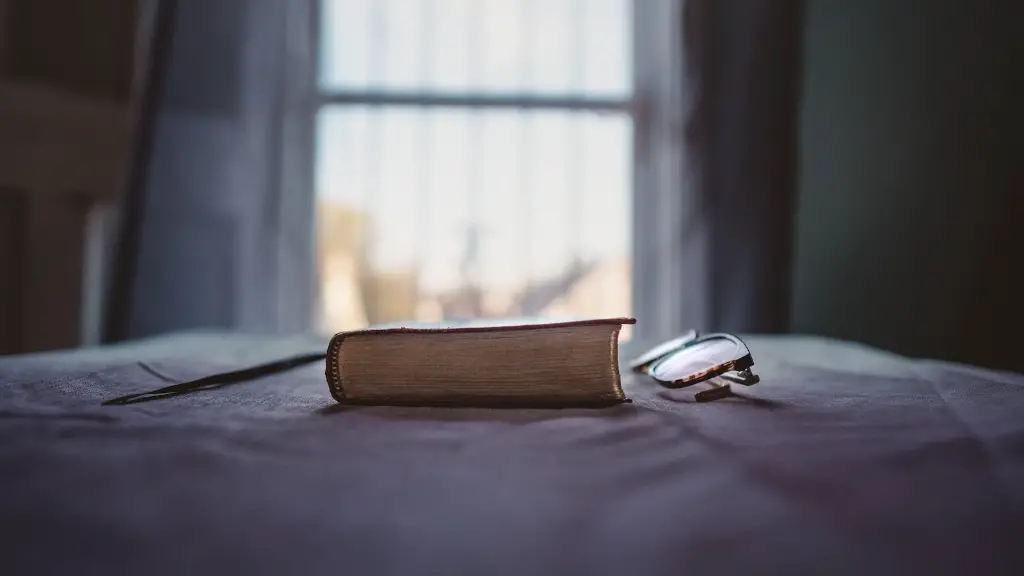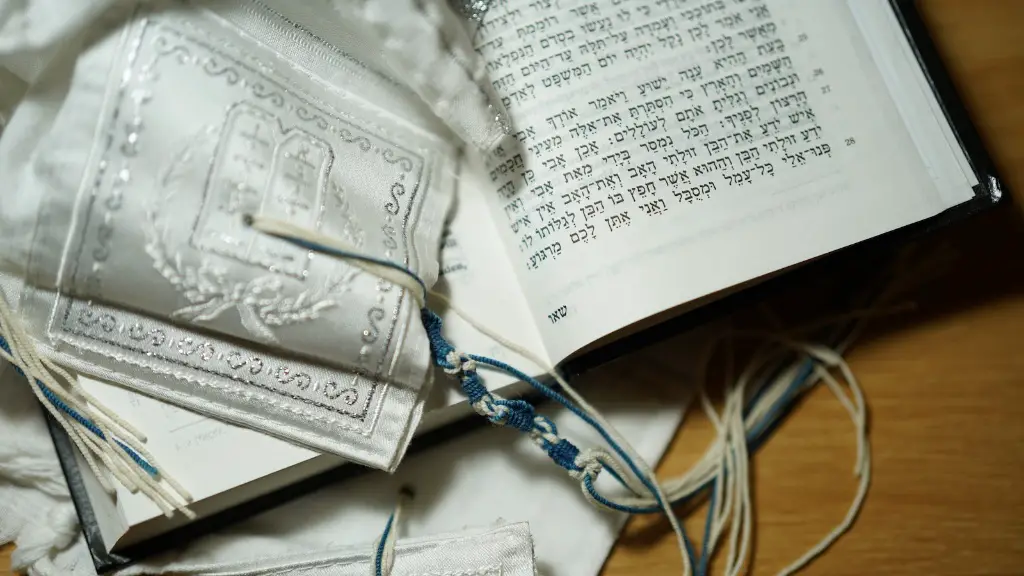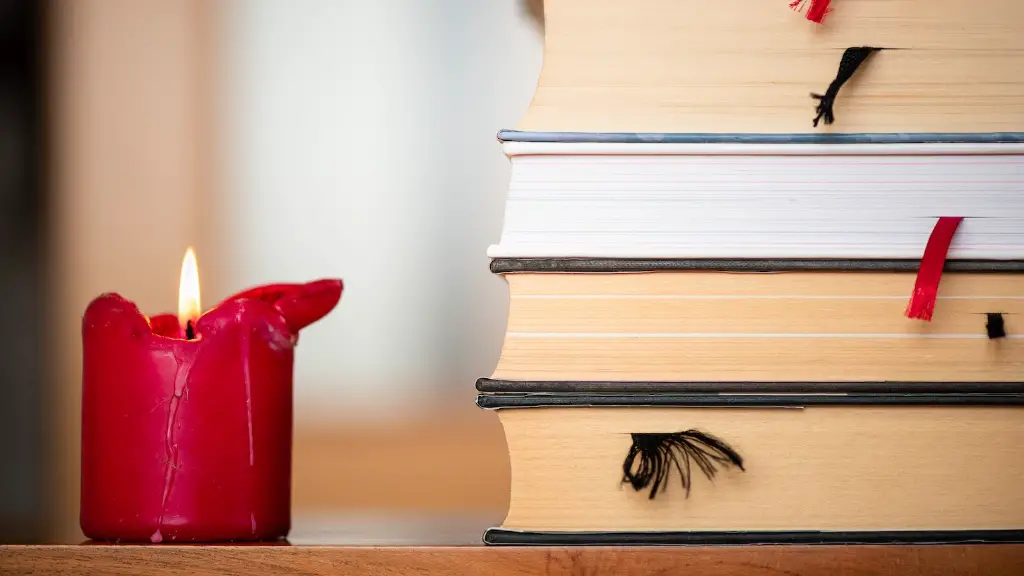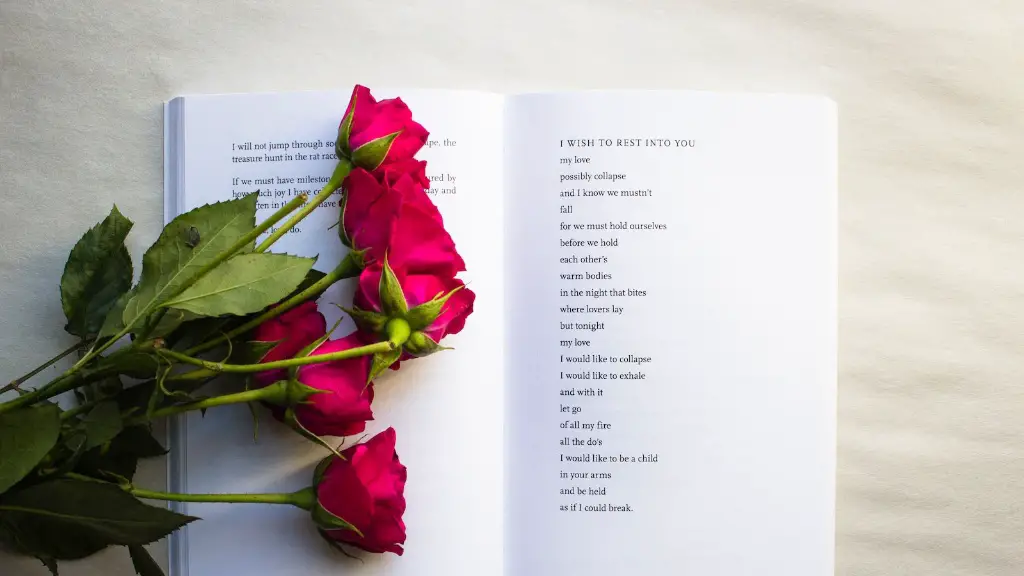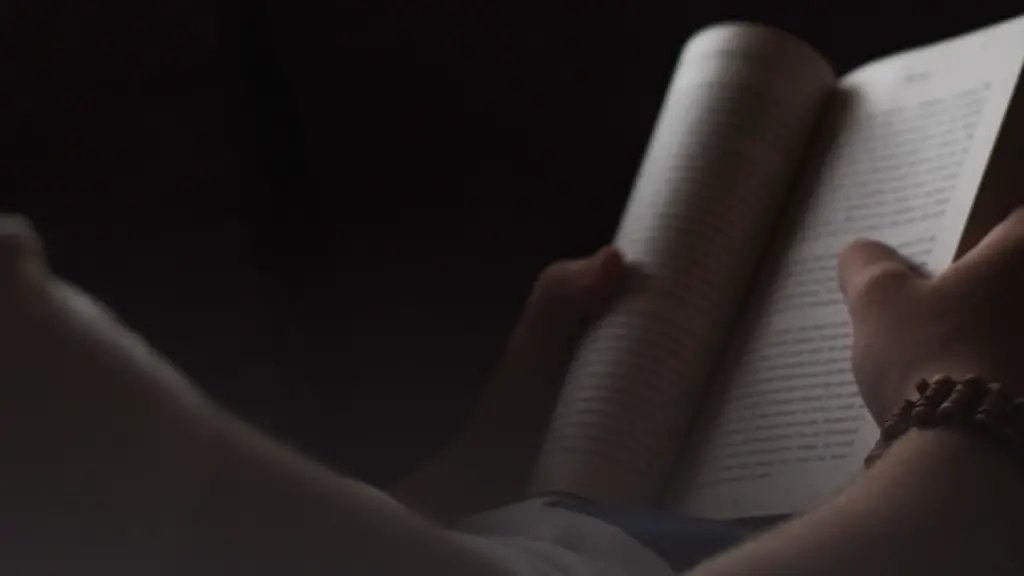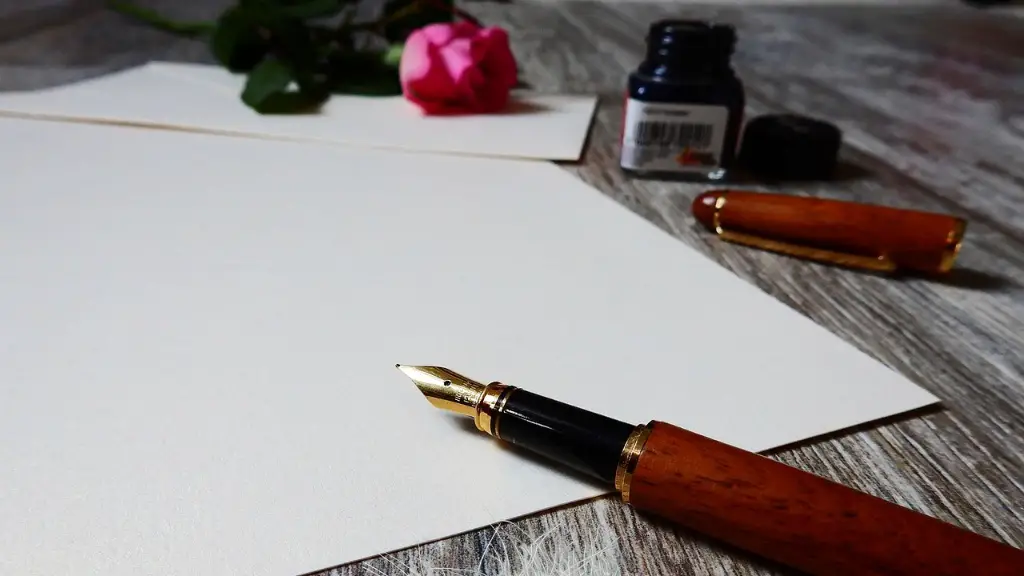What is Tone in Poetry?
Tone in poetry is the attitude that the writer conveys in the poem. Tone can be sad, happy, gloomy, romantic, witty, reflective, contemplative, humorous, dark, and so on. Tone is used in poetry to show the author’s reaction to the subject or the poem’s meaning. The tone of a poem can be conveyed through word choice, language, meter and imagery. It can also be inferred from the overall message of the poem or narrative. Tone gives a poem its energy and emotion, and it is one of the most important elements of a successful poem.
In order to understand tone, it is important to understand the different types of poetic devices that can be used to create a desired tone. One of the most commonly used poetic devices is the use of imagery. Imagery can be used to create atmosphere and emotions. For example, a poet may use bright imagery to express joy or joyfulness, or a poet may use dark imagery to convey sadness or gloominess. Other types of poetic devices such as musical devices, such as meter, can also be used to create a desired tone.
There are also certain literary techniques and conventions that can be used to convey tone. For example, a poet may use understatement to create a conversational tone, or a poet may exaggerate in an ironic tone. Additionally, the structure of a poem itself may determine its tone. For example, a blank verse poem has a more formal tone, while a free verse poem can have a more casual or relaxed tone.
Understanding the author’s tone in a poem is essential to interpreting a poem’s meaning. The tone can provide insight into the poem’s tone and the author’s perspective on the subject matter. For example, if a poem has a sad tone, then it may be expressing a longing or sadness that the author feels toward the subject. Similarly, if a poem has a humorous tone, then it may be expressing a light-hearted attitude toward the subject. Tone also helps the reader to understand the emotion behind the words and can be used to evoke a specific emotional response from the reader.
In short, tone in poetry is a critical aspect of writing that can be used to communicate the emotional contentof a poem. Understanding the types of poetic devices and literary techniques that can be used to convey tone can help readers to interpret a poem’s meaning. Tone in poetry can be used to create atmosphere and emotion, as well as toevoke a response from the reader.
How to Identify Tone in Poetry
Identifying tone in a poem can be difficult, but there are several things that can help. One of the most basic methods of determining the tone of a poem is to read the poem aloud and pay close attention to the sound of the words used. This can help the reader to get a better idea of the poem’s mood and to determine whether it is a sad, happy, romantic, or other kind of tone. Additionally,the reader can use context clues to help determine the tone of a poem. For example, if a poem references death, then the tone of the poem is likely to be somber or sad. On the other hand, if a poem references happy events, the tone is likely to be cheerful.
A reader can also use word choice to determine the tone of a poem. For example, words with negative connotations can create a sad, depressing tone, while words with positive connotations can create a cheerful, optimistic tone. Additionally, the poet’s choice of imagery can indicate the tone of a poem. For example, bright and cheerful imagery can express joy, while dark and gloomy imagery can express sorrow. Finally, the structure of the poem itself can be indicative of the tone.
Examples of Tone in Poetry
Tone can be expressed in different ways, depending on the poet’s approach. Here are some examples of how tone can be expressed in a poem:
One example of a happy tone in a poem is a poem about joy by Emily Dickinson:
My Heart is Glad —
It has no other Load —
But just the Bliss of knowing God —
In this poem, Dickinson expresses a cheerful tone with joyful imagery, such as the “Bliss of knowing God.”
Another example of a sad tone in a poem is a poem about sadness by Sylvia Plath:
The worlds around me blur and sway,
I feel the chill of endless grey,
A darkness in my heart so deep,
A sadness that can never sleep.
In this poem, Plath expresses a sad tone with gloomy imagery, such as the “chill of endless grey,” and the “darkness in my heart so deep.”
Poetic Tone in Context
Understanding tone in poetry is important in order to fully appreciate the poem and understand its message. Tone can be used to express a variety of emotions in a poem, from joy to sadness, from amusement to anger. Understanding the tone of a poem can help readers to get deeper into the poem and to understand its meaning. Being able to identify tone in a poem can also help readers to appreciate the depth and complexity of a poem, and to explore its many layers of meaning.
Additionally, being able to identify tone in a poem can help a reader to understand how the poet wants the poem to be interpreted. For example, a poem with a light-hearted tone might be interpreted as whimsical, while a poem with a serious tone might be interpreted as somber. Furthermore, understanding tone can also help readers to appreciate the different nuances in a poem, as well as the variations in tone that can be used to express different emotions.
Ultimately, understanding the tone of a poem is critical in order to properly interpret a poem. Being able to identify the tone of a poem can help readers to get more out of a poem and to appreciate its many complexities.
Tone through Poetic Devices
Understanding the different types of poetic devices used to create a desired tone can also help readers to appreciate the nuances of a poem. Common poetic devices used to create tone include imagery, meter, rhyme, and alliteration. Imagery can be used to create a desired mood, and it can be used to make a poem more vivid and expressive. Meter can also be used to create a desired tone.
For example, a regular meter such as iambic pentameter can create a more formal tone, while an irregular meter such as free verse can create a more casual or relaxed tone. Rhyme and alliteration can also be used to create a desired tone. For example, a rhyme scheme such as abab can create a more serious tone, while a rhyme scheme such as aabba can create a more playful tone.
In short, poetic devices such as imagery, meter, rhyme, and alliteration can be used to create a desired tone in a poem. Being able to recognize these devices and how they are used to create tone can help readers to better understand a poem and to appreciate its nuances.
Tone and Writing Style
Tone in poetry can also be influenced by a poet’s writing style. The way a poet chooses to use language to express their ideas will help to create the tone of the poem. For example, a poet may choose to use formal language to convey a more serious tone, or they may choose to use informal language to create a less serious tone. Additionally, a poet may choose to utilize figurative language or literary devices in order to create the desired tone. For example, a poet might use understatement to create a humorous tone or italics to create a poetic, rhythmic tone.
In short, a poet’s writing style and the way in which they choose to express their ideas can have a significant impact on the tone of a poem. Different writing styles will help to create different tones in a poem, so it is important to be aware of the different ways that a poet can use language to create a desired tone.
Conclusion
Tone is an important aspect of poetry and is often used to communicate the emotional content of a poem. Understanding tone can be difficult, but understanding the different types of poetic devices and literary techniques that can be used to create a desired tone can help readers to better interpret a poem’s meaning. Additionally, being aware of the different ways in which a poet writes and expresses their ideas can help readers to identify the tone of a poem. Understanding tone in poetry is essential in order to properly interpret and appreciate a poem’s many nuances and layers of meaning.
